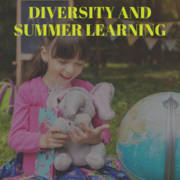Teaching Gratitude
Educators are often held to the lessons, objectives, and standards of our set curricula. With all that needs to be “covered,” there is likely not a ton of wiggle room. Of course we are passionate about our content areas; however, there also are often larger truths that we would like to touch upon during instruction. With such little time devoted to non-curricular instruction, it is always a nice surprise when time permits a small window to discuss things outside of the content area that are no less important.
This time of year is a beautiful one, full of family gatherings, holiday festivities, and building memories with close friends. We often become so wrapped up in the holiday spirit and merriments that we fail to look around and realize how truly fortunate we are. That said, it is a favorite activity of mine to focus some instructional time on gratitude. As a middle school teacher, I find it especially beneficial to take a bit of time to discuss this concept with my adolescent students. It is typical, and quite biological, actually, for teens to live primarily from their own perspective—taking little time to think of others before thinking of themselves. With Thanksgiving and the winter holidays in the forefront, this is the perfect time of year to give thanks.
So how do I prefer to do this in the classroom? It may sound predictable and run-of-the-mill, but my activity focusing on anonymous thank you notes proved to be very inspiring this year. Students were given as many blank gratitude notes as they wanted—nothing fancy, just a turkey saying “thank you” and a space for a brief message. The only instruction? Thank someone sincerely and anonymously for something that they did to bring positivity to you. The point is to be completely candid, while remaining anonymous. This way, the focus is on the receiver, the person for whom each student has felt grateful for in one way or another.
I assumed that many students would send thank you notes to their best friends, and many did. However, what surprised me the most were the thank you notes that went a little deeper than I had anticipated. Things that had occurred in the beginning of the year, when some students were virtual strangers, were remembered fondly. Some thank you notes indicated that one student’s kind gesture sparked a true friendship, while other notes came from students who run in completely different peer groups.
Even more surprising and heartwarming were the thank you notes that several teachers received from students. Simple, anonymous thank you notes from my thoughtful middle schoolers showed me that gratitude was something that we can all exhibit and learn more about every day. Some notes thanked a teacher simply for making learning fun; other notes thanked teachers for sharing their lunch with a student who didn’t have anything to eat. The larger take away message here was that we may not know how a small, kind gesture can turn someone’s day around. Even the slightest act of kindness proved to be memorable for many kids.
Yes, we are tasked with teaching our lessons, concepts, and topics, but the social environment that schools provide allows students and teachers to learn important life lessons as well—including gratitude.









